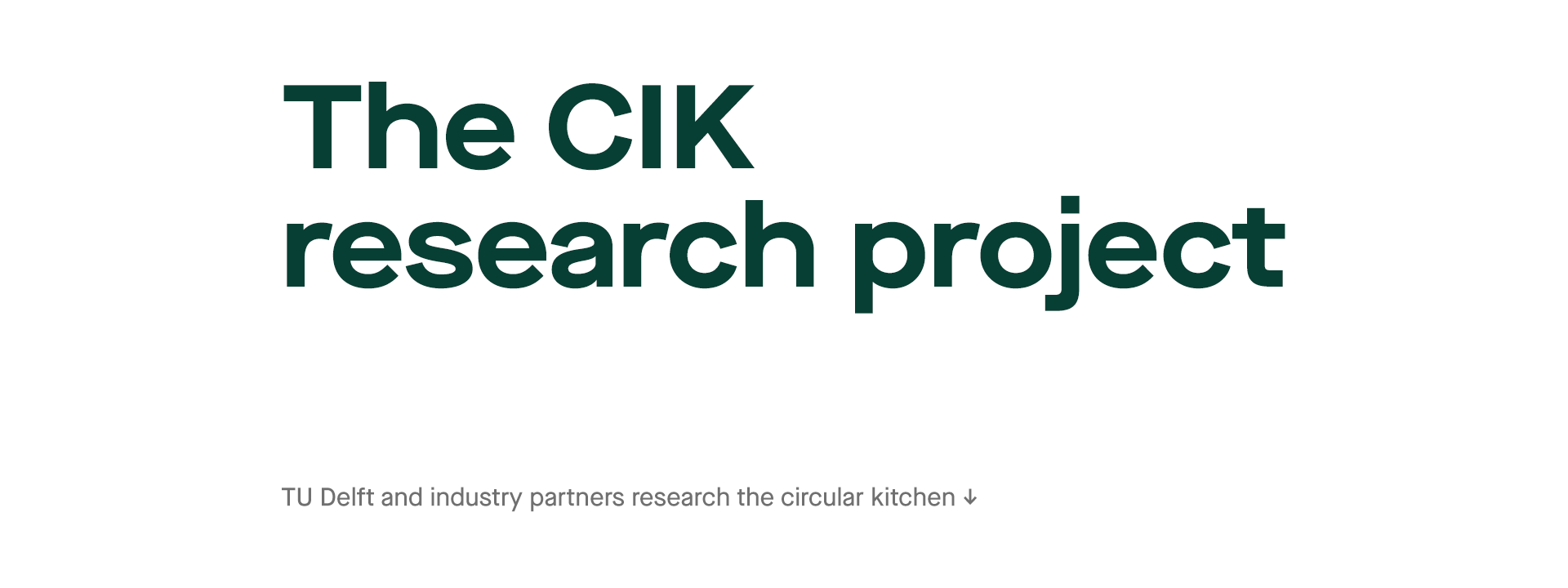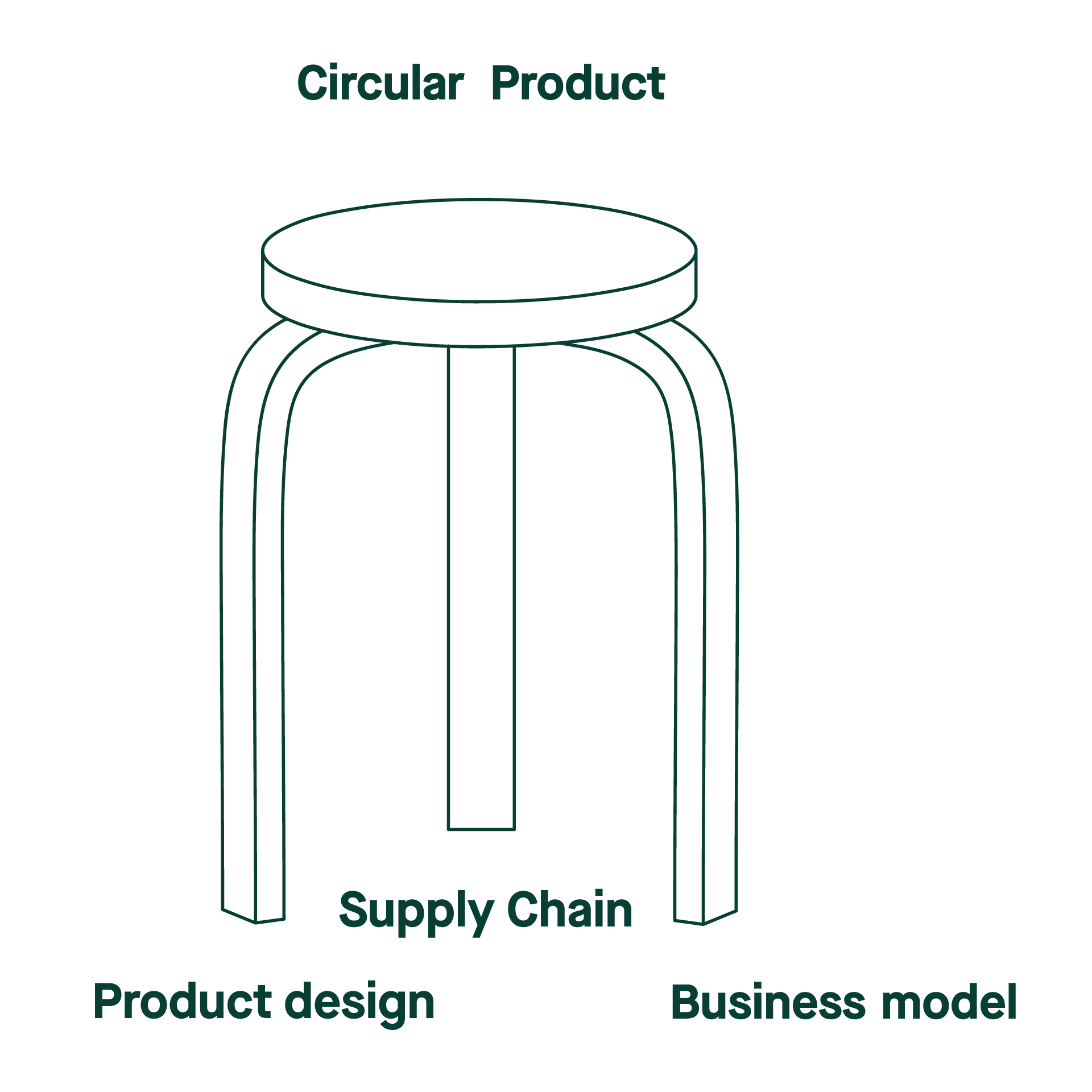Together with industry partners and the support of EIT Climate-KIC and AMS Institute, TU Delft is researching the development of a circular kitchen.
The three pillars of a circular product
Like a stool, a well-functioning circular product rests on three legs:
- a product design that enables circular use
- a supply chain that supports circular use
- a business model that encourages circular use
If one of the legs is missing, the stool falls over and the product is not circular.
From idea to market in four years
To transform the three pillars, it's important that all parties in the supply chain are involved from an early stage. In co-creation workshops, as part of the CIK project, the parties determine the product design, the (new) supply chain and the business model. During the workshops, different variants of circular kitchens and the associated supply chain and business models are conceived, presented and criticised and prototypes are tested. This co-creation process results in a market-ready circular kitchen within four years.
Research through development
Not only does the development of a circular kitchen contribute to making the built environment more sustainable, but the process itself can provide valuable insights. For example, as part of the CIK project we are investigating the extent to which a circular kitchen is possible both in the current market and in the future. We consider what exactly an ideal circular kitchen would look like and try to produce a version as close to this ideal as possible.
How do you measure circularity?
Researching ways to develop (generate) and evaluate circular products is a crucial part of the project because we need to understand precisely what circularity means and how it can be measured. We do this by using generative and evaluative assessment methods.
Generative assessment methods: principles
The literature on the circular economy provides many generative methods containing principles which can be applied to the design of circular products. These can be used to support the CIK project and may also be refined further. We are therefore conducting literature research on generative assessment methods and their application to circular products.
Evaluative assessment methods: performance
Literature research shows that products in the circular economy are primarily assessed on environmental, economic and functional performance. Within the CIK project, we develop and test various assessment methods and write scientific publications based on our findings.
We use evaluative assessment methods to determine the extent to which the kitchen developed is 'ideal'. If it is not ideal, we look into the reasons why.
Environmental performance and life cycle costs
We are researching ways to assess the environmental impact of circular products. We have also developed a method for calculating total costs made during the life cycle (life cycle costs) of a circular product. This method enables us to compare different versions of the circular kitchen. Comparisons show that in its current form, after just one cycle of use, the CIK has lower life cycle costs than a conventional kitchen.
Functional value
As part of the CIK project, we also conduct research into functional requirements for kitchens, desired functional additions and user experiences. We employ various methods, including co-creation workshops, interviews with users and insights from the kitchen industry to determine the requirements for both conventional and circular kitchens. The results will be used as part of the CIK evaluation process as well and will provide insight into user acceptance of certain principles within the circular economy. These insights will eventually be incorporated into a scientific publication.



